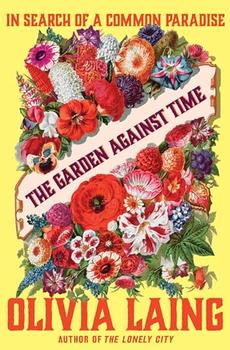Summary | Excerpt | Reviews | Beyond the Book | Read-Alikes | Genres & Themes | Author Bio

In Search of a Common Paradise
by Olivia LaingThis article relates to The Garden Against Time
.jpg) In The Garden Against Time, Olivia Laing traces the evolution of gardens and the different meanings they have taken on in society. One major European development she addresses is the work of Capability Brown and the advent, in the mid-18th century, of a style that came to be known simply as the English garden.
In The Garden Against Time, Olivia Laing traces the evolution of gardens and the different meanings they have taken on in society. One major European development she addresses is the work of Capability Brown and the advent, in the mid-18th century, of a style that came to be known simply as the English garden.
Lancelot "Capability" Brown was born in 1716. The son of a land agent and a chambermaid, he started his career as an under-gardener at Stowe House, a stately home not far from Oxford, before quickly climbing the ranks to become head gardener of the estate in his mid-20s. By this time, a certain aesthetic ideal was starting to bloom in the gardens of England's aristocracy. Every earl and baron in the country dreamed of their own personal Eden, but paradise was getting a new look. Brown, in his position of power, was fundamental in pushing these emerging ideas to never-before-seen heights.
In his designs, he threw out the formality of the "jardin à la française," the style then dominant among Europe's elite. Epitomized by André Le Nôtre's vast gardens at Versailles, the French garden demanded straight lines laid out according to an uncompromising geometric plan. By contrast, Brown sought to bring out natural curves and undulations in the landscape, looking for the picturesque rather than the imposing. He favored sweeping vistas, asymmetry, and solitary trees planted at a distance to emphasize a sense of scale. The style proved so popular and was replicated to such an extent by Brown—he is associated with the design of over 250 landscapes in total—that to the Europeans who came from across the Channel and discovered his work, it became known as the "jardin à l'anglaise," or English garden.
As Olivia Laing makes clear in The Garden Against Time, however, a pastoral paradise can conceal a thornier reality. Brown's landscapes are, in one sense, masterworks of deception: more often than not, his naturalism was achieved through ruthless rearrangement of the existing landscape. If a potential viewpoint was lacking a hill, he would build one; if it lacked a lake, he would dam a river and create that too. If a village or hamlet happened to be spoiling the aesthetic, he would see what could be done about erasing it from the map. His Grecian Valley at Stowe House, for example, may look as though slow centuries shaped its curves, but its creation involved the digging out of 24,000 cubic yards of soil by hand. Brown's nickname even came from his eye for a landscape's "capabilities"—in other words, the ways in which it could be reshaped to best conform to the new aristocratic ideal. With a history like this, the English garden can make no claim to being less artificial than its rigidly designed French counterpart.
Nevertheless, the popularity of the style endures to this day, and its artificial naturalism has even become a part of English cultural identity; when one thinks of England's "green and pleasant land," there's a good chance one's thinking of a Capability landscape. The style has proven immensely popular overseas, as well—helped by the fact that maintaining the English garden requires less labor and overall expenditure when compared to its French cousin. In Paris, the leafy Bois de Boulogne clearly takes more inspiration from the informality of Capability's designs than it does from nearby Versailles, while the huge Englischer Garten in Munich reveals its influences in its name. From these examples, we see too how Brown's aristocratic Eden can take on a new egalitarian aspect in the modern world. No longer are these green spaces the reserve of the lord and lady of the manor. It's a development Olivia Laing would be proud of: one step closer to the "common paradise" that forms the spine of her book.
Old English Garden at Danson Park, London
© Marathon, via Geograph (CC BY-SA 2.0)
Filed under Nature and the Environment
![]() This article relates to The Garden Against Time.
It first ran in the July 17, 2024
issue of BookBrowse Recommends.
This article relates to The Garden Against Time.
It first ran in the July 17, 2024
issue of BookBrowse Recommends.
Failure is the condiment that gives success its flavor
Click Here to find out who said this, as well as discovering other famous literary quotes!
Your guide toexceptional books
BookBrowse seeks out and recommends the best in contemporary fiction and nonfiction—books that not only engage and entertain but also deepen our understanding of ourselves and the world around us.